INTRODUCTION
NMB’s vision is to be the preferred financial services partner in Tanzania. Its main goal is the realization of customer value. As a strategic objective, NMB aims for market leadership in Tanzania. NMB acts responsibly in the development of sustainable economic development. Its employees are a critical success factor to realize its ambitions.
Taking risks is inherent to these activities. The level of risk NMB is willing to take –its risk appetite- is determined by the management and endorsed by the board, which also assumes responsibility to manage these risks through the Board Audit, Risk and Compliance Committee. The risk appetite statement sets out principles, objectives and measurements to utilize NMB’s costly and scarce resources: its balance sheet, its capital and its reputation. The focus of the risk appetite statement, previously credit risk related, now also includes operational risk and market risk.
Continuity is a key objective for NMB. To guarantee this continuity, financial stability and a strong reputation are a prerequisite. NMB avoids risks which might endanger continuity or damage its business model. NMB has a tradition and culture of prudent risk policies. It is risk aware and utilizes its scarce resources carefully and economically. This prudence is applied in making strategic decisions and executing them.
NMB aims for a low risk profile. Predictable and consistent financial results and solid balance sheet ratios are essential in this regard, which is, among others, expressed in a high objective for the Tier-1 capital ratio. Maintaining its reputation requires prudence, strong controls and immediate action on any shortcomings. The low risk profile should contribute to a greater stability of earnings. Such stability should be enhanced by preventive risk controls reducing the chance on occurrence of operational losses. A contributor to this is also the centralization of some of the high risk back-office processes, particularly in the credit area.
RISK MANAGEMENT FRAMEWORK
Strategic framework
NMB’s strategic framework is guided by our values and our mission to be the preferred Tanzanian financial service provider in both urban and rural areas.
Risk strategy
NMB desires to keep its strong and robust financials in order to safeguard its sustainability. Therefore, it does not wish to enter into risks which, within reasonable expectation, could endanger this.
NMB has a risk strategy aimed at continuity with special focus on:
- Safeguarding its identity and reputation
- Protection of profits and profit growth
- Maintaining solid balance sheet ratios
These three focus areas of the risk strategy are not stand-alone, but have a strong interdependence. Reputation is important to keep the trust of the customers and investors and is therefore essential to maintain healthy balance sheet ratios. In turn, solid balance sheet ratios support the profitability and simultaneously the trust and reputation.
Selective Risk Acceptance
In developing or designing new products and activities, NMB always considers the interest of the customer, as well as safeguarding NMB’s reputation and the avoidance of sizeable losses. Approval of new products is only given by the Product Approval Committee. NMB operates in full awareness of its fiduciary duty towards its customer. NMB demands full Know Your Customer (KYC) compliance for adequate understanding of each customer, right from the time of opening of bank accounts to the point of accessing of other banking services including credits.
Risk Management and Measurement
Within NMB, the Enterprise Risk Management (ERM) methodology is used to comprehensively manage and mitigate the bank’s various (operating) risks to within acceptable limits of tolerance. It should be noted that this process is designed to manage rather than eliminate, the risk of failure to achieve bank’s business objectives, and can only provide reasonable, and not absolute, assurance against material loss.
At the highest level, the Board of Directors acknowledges its overall responsibility for the process of risk management, as well as in reviewing its effectiveness. The Board approves the risk appetite, risk strategy, and risk policies along with the embedded limits.
The CEO, CRCO and the rest of the Management Team are assisted by key advisory and governance committees such as the Loan Portfolio Quality Committee Management, Audit Risk & Compliance Committee, Asset and Liabilities Committee (ALCO), Product Approval Committee (PAC), Operational Risk Committee (OPSCO) and Credit Committees (CREDCO) to effectively implement the Bank’s Risk Management Policies and Procedures. The Board, through the BARCC periodically reviews and evaluates the activities and effectiveness of the Bank’s Overall Risk Management Function.
The Chief Risk and Compliance Officer (CRCO) is responsible for the day-to-day implementation of the risk policies within NMB and proper functioning of the bank’s Independent Risk Management Function which identifies, monitors, measures and reports on the bank’s various operating risks which include Credit Risk, Operational Risk, Product Approval, Compliance Risk, Liquidity Risk and Market Risk. All business lines at NMB are responsible for individually monitoring and mitigating their operating risks, and the independent Risk Management Function is responsible to individually checking the efficacy of these units’ risk control mechanisms. The business line is owner of the risks within its area, while the Risk function acts as second line of defence and the Internal Audit of the bank as third line of defence.
In risk management risks are appropriately identified, evaluated and managed, considering the interrelationships between risks. This process happens on a continuous basis. Under this framework, structured risk self-assessments take place on a recurring basis. Risk assessments consider both the likelihood of an event occurring as well as the impact the risk would have should one of such events occur.
Key System Developments.
In order to further support processes, a few tools and initiatives were taken into consideration to further strengthen security and mitigate some risks. The risk management team developed a tool for automated credit decision making on micro finance loans (credit scoring), this tool is currently being rolled out in the organisation.
Moreover, there was centralisation on the monitoring and recovery of Salaried Workers Loans, one of the key retail products at the loan centre.





